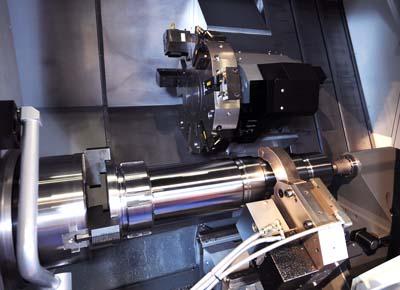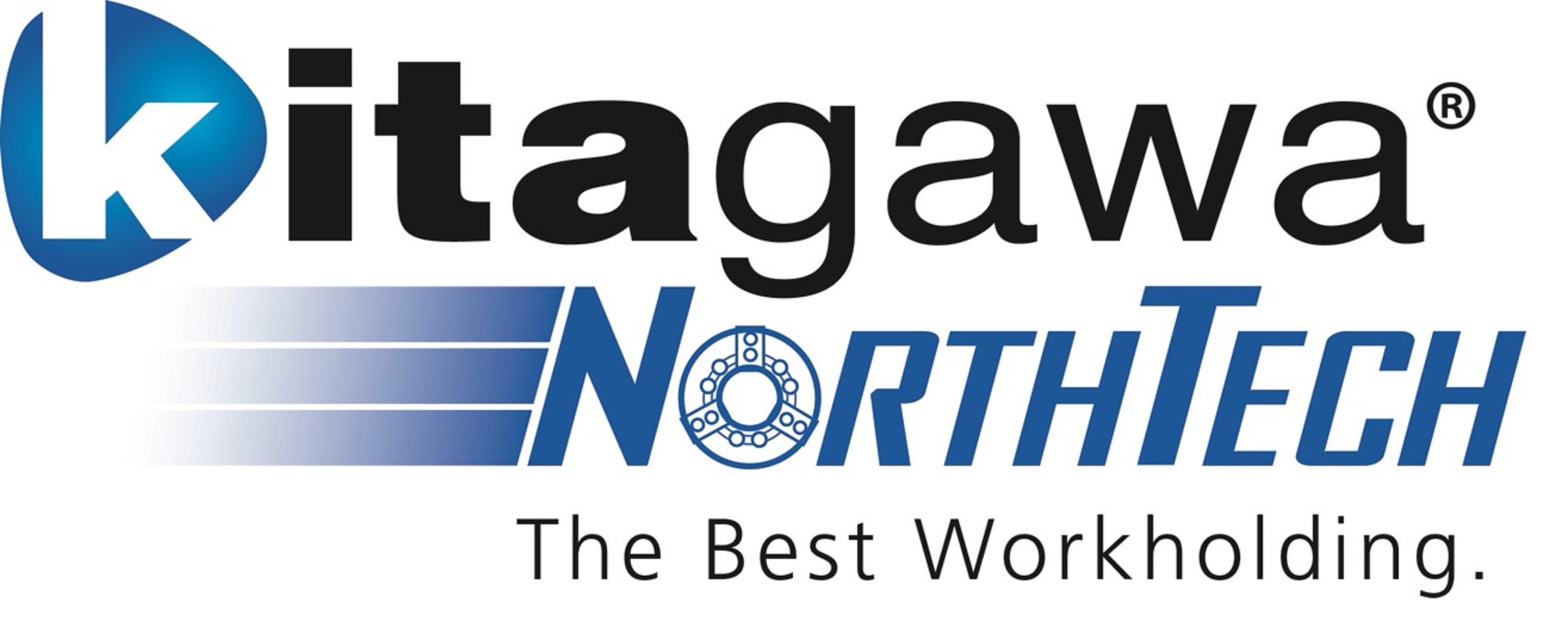
The most recent addition to Kitagawa-NorthTech Inc.'s family of solutions is a custom designed steady rest for the Haas ST-40 high performance turning centers.
This compact designed steady rest is manufactured to compliment and support the extreme rigidity and heavy cutting capabilities of these large capacity machines. The ST-40 steady rest was designed to the exact specifications provided by Haas to rest comfortably in the bed and allow ample clearance for clamping and turret operations. This diverse model has the capability to grip up to 310 millimeters (12.20 inches). Offering a perfect fit solution, to provide smoother installation and eliminate "work-around" conditions, Kitagawa-NorthTech packages the ST-40 application as a complete kit.
"By continually advancing innovations and operational processes, we are able to lead the way in helping customers Redefine Productivity and achieve profitable gains," states Stuart Fishman, Kitagawa-NorthTech's Business Development Manager, OEM Machine Tool Division.
Contact Details
Related Glossary Terms
- centers
centers
Cone-shaped pins that support a workpiece by one or two ends during machining. The centers fit into holes drilled in the workpiece ends. Centers that turn with the workpiece are called “live” centers; those that do not are called “dead” centers.
- clearance
clearance
Space provided behind a tool’s land or relief to prevent rubbing and subsequent premature deterioration of the tool. See land; relief.
- steady rest
steady rest
Supports long, thin or flexible work being turned on a lathe. Mounts on the bed’s ways and, unlike a follower rest, remains at the point where mounted. See follower rest.
- turning
turning
Workpiece is held in a chuck, mounted on a face plate or secured between centers and rotated while a cutting tool, normally a single-point tool, is fed into it along its periphery or across its end or face. Takes the form of straight turning (cutting along the periphery of the workpiece); taper turning (creating a taper); step turning (turning different-size diameters on the same work); chamfering (beveling an edge or shoulder); facing (cutting on an end); turning threads (usually external but can be internal); roughing (high-volume metal removal); and finishing (final light cuts). Performed on lathes, turning centers, chucking machines, automatic screw machines and similar machines.

